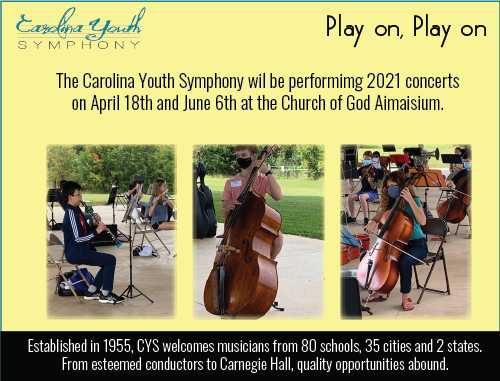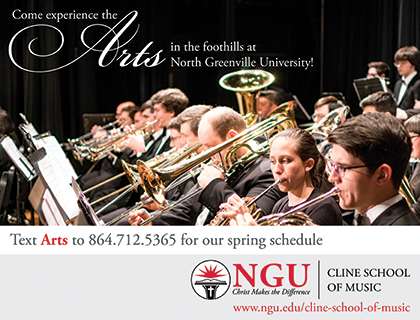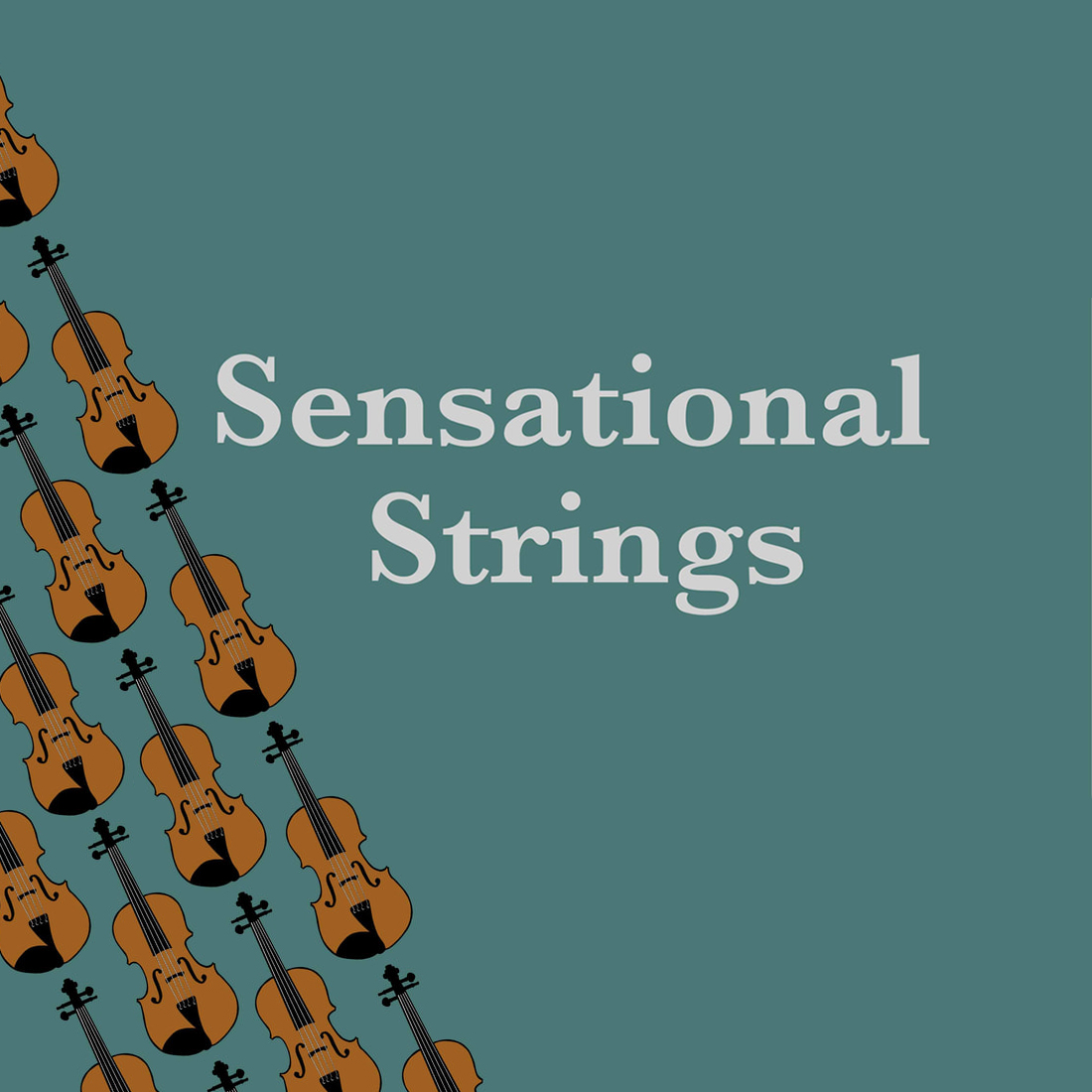
Saturday, May 1, 2021 at 8:00 p.m.
Sunday, May 2, 2021 at 3:00 p.m.
First Presbyterian Church
Ankush Kumar Bahl, conductor
|
B. BRITTEN
|
Simple Symphony |
|
J. SIBELIUS
|
Rakastava |
| A. DVORAK (1841-1904) |
Serenade for Strings |
The Greenville Symphony Orchestra thanks the staff and congregation of First Presbyterian Church for hosting concerts this season.
This General Operating Support Grant program is funded in part by the Metropolitan Arts Council with grants received from the City of Greenville, the South Carolina Arts Commission whichreceives support from the National Endowment for the Arts and private donations.
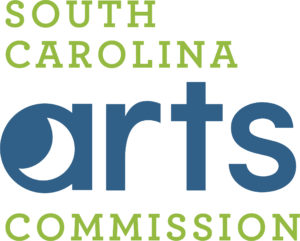
This organization is funded in part by the
South Carolina Arts Commissionwhich receives support
from the National Endowment for the Arts.
VIOLIN
Mary Lee Taylor Kinosian
Concertmaster
Leila Cunningham Roe Endowed Chair
Shr-Han Wu
Assistant Concertmaster
Uwe Diestel Endowed Chair
Robin Hague Els
Catherine Hazan
Melissa Dant
Sarah Land
Inez Hullinger Redman
VIOLIN
Joanna Mulfinger
Principal
Xiaoli Saliny
Assistant Principal
Kathleen S. Robinson
Carol Roosevelt
Elizabeth Fee
Kristen Browning
Emily Kirkpatrick
VIOLA
Arthur Ross III
Principal
Erika and Chuck Riddiford Endowed Chair
Alvoy Bryan, Jr.
Assistant Principal
John Young Shik Concklin
Scott Garrett
CELLO
Ismail Akbar
Principal
Guild of the Greenville Symphony Endowed Chair
Ryan Knott
Assistant Principal
David Saliny
Cynthia Sulko
DOUBLE BASS
Tim Easter
Principal
Anonymous Endowed Chair
Ian Bracchitta
Assistant Principal
Maurice Belle
TIMPANI
Daniel Kirkpatrick
Principal
Nancy B. Stanton Endowed Chair
PRODUCTION MANAGER
Laura Auvil
PRINCIPAL LIBRARIAN
John Wickey
Program Notes by Paul Hyde
--------------------------------------------------------------------------
‘Simple Symphony”
Benjamin Britten (1913-1976)
British composer Benjamin Britten prefaces his 1934 score with this message:
“The ‘Simple Symphony’ is entirely based on material from works which the composer wrote between the ages of nine and 12. Although the development of these is in many places quite new, there are large stretches of the work which are taken bodily from the early pieces — save for the re-scoring for strings.”
Britten called this string symphony “simple” because of its brevity and straightforward structure. The composer gave each of the four movements a title:
- “Boisterous Bourree” presents a lively syncopated theme (boisterous indeed) that will be balanced by a more lyrical second melody. The basic material comes from Britten’s Suite No. 1 for Piano, written in 1926. A note on the dance form: A “bourree” is a spirited French dance of the baroque period often beginning on an upbeat, as does this movement.
- “Playful Pizzicato” is, at the title suggests, a jaunty scherzo in which the strings are plucked rather than bowed. Britten first wrote this music for his Scherzo for Piano in 1924.
- The slow “Sentimental Saraband” is the emotional heart of the symphony. The main melody is nostalgic and gently melancholy. The contrasting second theme takes the form of a lullaby. When the main melody returns, it does so with passionate intensity. The movement closes with fragments of the second theme lullaby. The music is taken from Britten’s Suite No. 2 for Piano (1925). A note on the dance form: A “saraband” originally was a brisk Spanish dance but became a more stately style when introduced in France and England in the early 17th century.
- “Frolicsome Final” is just what the title says: a movement bursting with youthful hope and vitality. The music comes from Britten’s Piano Sonata No. 9 (1926).
“Rakastava”
Jean Sibelius (1865-1957)
Sibelius’ “Rakastava” (“The Lover”) owes its origins to four songs the Finnish composer wrote for male chorus in 1897. He used those songs as the basis for his “Rakastava” suite, completed in 1912.
The short work features three contrasting sections. The first, simply titled “The Lover,” is filled with passionate longing. The second section, “The Way of the Lover,” is dreamlike, featuring a soft, continuous triplet figure. The final movement, “Good Night, My Beloved. Farewell!” takes the form of a nocturne, alternately melancholy and serene.
Sibelius often conducted “Rakastava” together with his symphonies because the piece “captivated audiences.”
Serenade for Strings
Antonin Dvorak (1841-1904)
There’s nary a cloud in Dvorak’s sunny Serenade for Strings. The 1875 piece seems a product of happy times, and indeed it was. Dvorak had married two years before and his son recently had been born. He had composed some of his finest work to date, including the Fifth Symphony, and was enjoying both financial security and growing recognition as a composer. The Czech composer wrote the serenade in a mere 12 days.
- Moderato. The singing theme at the beginning seems the soul of tranquility. Later, a new dancelike theme will be introduced. The initial theme returns to end the movement in quietude.
- Menuetto. Allegro con moto: A lilting waltz dominates the second movement. The middle section introduces a whiff of tension before the waltz returns.
- Scherzo. Vivace: The scherzo evokes the high spirits of a rustic celebration. The tempo slows, however, for more songful episodes.
- Larghetto. The music grows more reflective and wistful. The flowing melodies and tender phrases provide a sharp contrast to the vigorous third and fifth movements.
- Finale. Allegro vivace: Dvorak offers one of his stylistic trademarks, evoking the fiery spirit of Czech folk music. Dvorak reprises the theme from the beginning of the serenade, bringing the piece full circle. A dynamic coda concludes the work.
Paul Hyde, a longtime Upstate journalist, is the public information coordinator for the College of Architecture, Arts and Humanities at Clemson University. He writes regularly for the Greenville Journal. Follow him on Facebook and Twitter: @PaulHyde7.
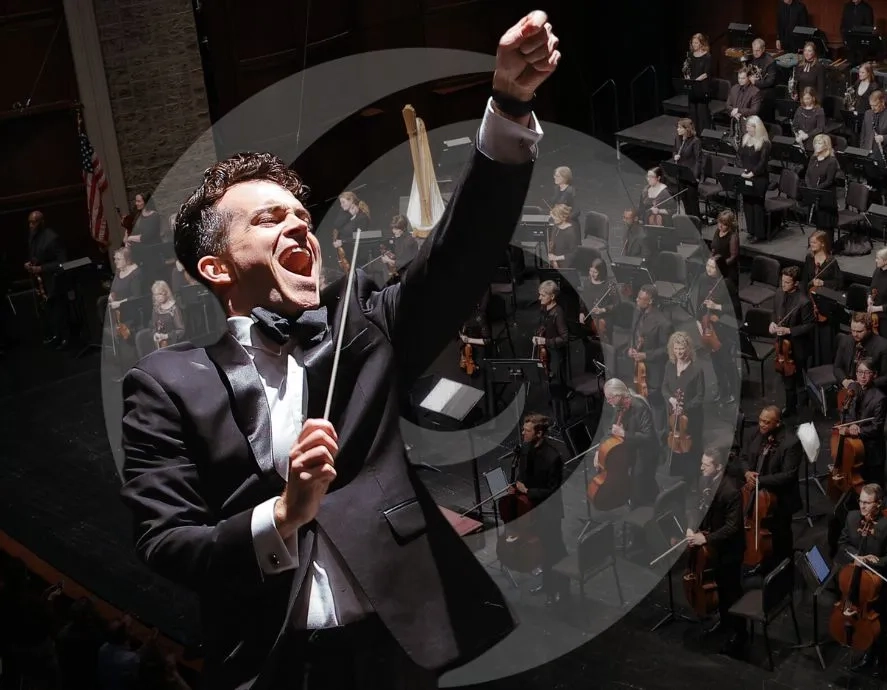
Concert Hall Series
Saturday performances at 7:30 pm
Sunday at 3:00 pm
Opening Night: Beethoven’s Ninth
October 5 & 6
Grieg’s Piano Concerto
November 23 & 24
Tchivzhel Conducts Tchaik 4
January 25 & 26
Duke Ellington’s The River
March 1 & 2
Jacqueline Tso plays
Bruch’s Scottish Fantasy
April 5 & 6
Beethoven and Brazil
May 10 & 11
Gunter Theatre Series
Performance start times vary
Peter and the Wolf
November 9 & 10
The Marriage of Figaro
February 15 & 16
Movers, Shakers, and Noise-Makers
March 22 & 23
Bach-Inspired with Violist Kathryn Dey
May 24 & 25
Special Events
Holiday at Peace
Peace Concert Hall
December 6 at 7:00 pm
December 7 at 1:00 & 7:00 pm
December 8 at 2:00 pm
Harry Potter and the Prisoner of Azkaban™ in concert
Peace Concert Hall
January 11 at 1:00 pm and 7:00 pm
January 12 at 2:00 pm
Star Wars: The Empire Strikes Back in Concert
May 4 at 7:00 pm
Bon Secours Wellness Arena
Music at Hotel Hartness
A luxe chamber music experience in a beautiful space.
Performances at 7:00 pm
Dracula! with Special Guest Dacre Stoker
October 23
Musical Landscapes
April 23
Music in the Gray Loft
Enjoy lunch or wine with a friendly, casual chamber music experience.
Performances at 12:00 and 5:30 pm
Dracula! with Special Guest Dacre Stoker
October 24
Musical Landscapes
April 24
Details and tickets available at greenvillesymphony.org












